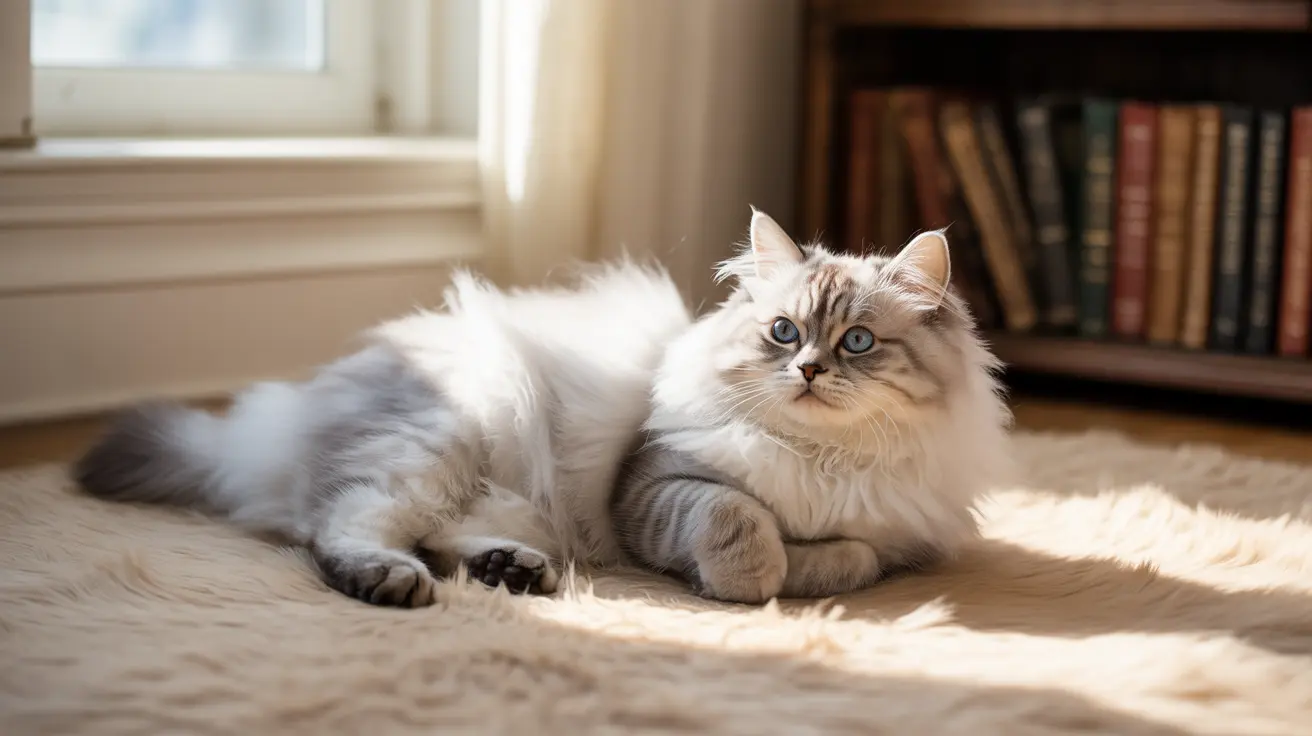The Comfort Factor: Relaxation and Rest
The primary reason cats curl their paws is simple: comfort. Just as humans have preferred sitting positions, cats find this tucked position particularly relaxing. When a cat tucks their paws beneath them, it's often a sign they're settling in for a peaceful rest while remaining somewhat alert to their surroundings.
This position allows cats to quickly transition from rest to action if needed, making it an ideal posture for light napping. The muscles remain partially engaged, yet relaxed enough for comfort – a perfect balance for our feline companions.
Temperature Control and Body Heat Conservation
Cats' paw pads contain numerous blood vessels that can cause significant heat loss when exposed. By curling their paws underneath their bodies, cats effectively minimize heat loss through these sensitive areas. This behavior becomes especially noticeable during colder months or in air-conditioned environments.
Think of it as nature's own heating system – by tucking their paws under their warm body, cats can maintain their optimal body temperature more efficiently. This instinctive behavior helps them conserve energy that would otherwise be spent on heating their extremities.
Evolutionary Instincts at Play
The paw-curling behavior has deep roots in cats' evolutionary history. Wild cats would adopt this position to protect their vital organs while remaining ready to spring into action for hunting or escape. This compact posture made them less visible to both prey and predators.
Even though our domestic cats no longer face the same survival challenges, these instinctual behaviors persist. The "loaf" position allows them to maintain situational awareness while appearing relaxed – a testament to their wild ancestry.
Health and Wellness Signals
While paw curling is typically normal behavior, changes in this habit can sometimes indicate health issues. If your cat suddenly starts curling their paws differently or shows signs of discomfort while doing so, it might signal underlying problems such as:
- Joint pain or arthritis
- Muscle soreness
- Paw pad injuries
- Neurological issues
Pay attention to any accompanying symptoms like limping, excessive licking of the paws, or reluctance to move.
Social and Emotional Communication
Cats use the paw-tucking position as part of their body language repertoire. When combined with other behavioral cues, it can indicate various emotional states:
- Contentment and trust in their environment
- Desire for personal space
- Feeling of security
- Mild social withdrawal
Frequently Asked Questions
Why do cats curl their paws when they sit or nap?
Cats curl their paws primarily for comfort, warmth conservation, and to maintain a position that allows them to quickly respond to potential threats or opportunities. This position also helps them feel secure while resting.
How does curling paws help cats stay warm?
By tucking their paws underneath their bodies, cats minimize heat loss through their paw pads, which contain many blood vessels. This position helps them maintain body temperature more efficiently, especially in cooler environments.
Can curling paws indicate a cat's emotional state or desire for alone time?
Yes, paw curling can be an indicator of a cat's emotional state. When combined with other body language, it may signal contentment, desire for privacy, or a need for personal space.
When should I be concerned if my cat is curling its paws too much or oddly?
Be concerned if you notice changes in their typical paw-curling behavior, especially if accompanied by signs of pain, limping, excessive paw licking, or reluctance to move normally. These could indicate underlying health issues requiring veterinary attention.
What evolutionary reasons explain why cats curl their paws underneath their bodies?
This behavior evolved as a survival strategy, allowing cats to protect their vital organs while maintaining readiness for quick action. The position provided advantages in both hunting and avoiding predators, making it an important evolutionary adaptation.
Conclusion
Understanding why cats curl their paws gives us valuable insights into their physical and emotional well-being. While this behavior is typically normal and healthy, being aware of changes in your cat's paw-curling habits can help you better monitor their health and happiness. Remember to provide your cat with comfortable resting spots and respect their need for personal space when they assume this position.






